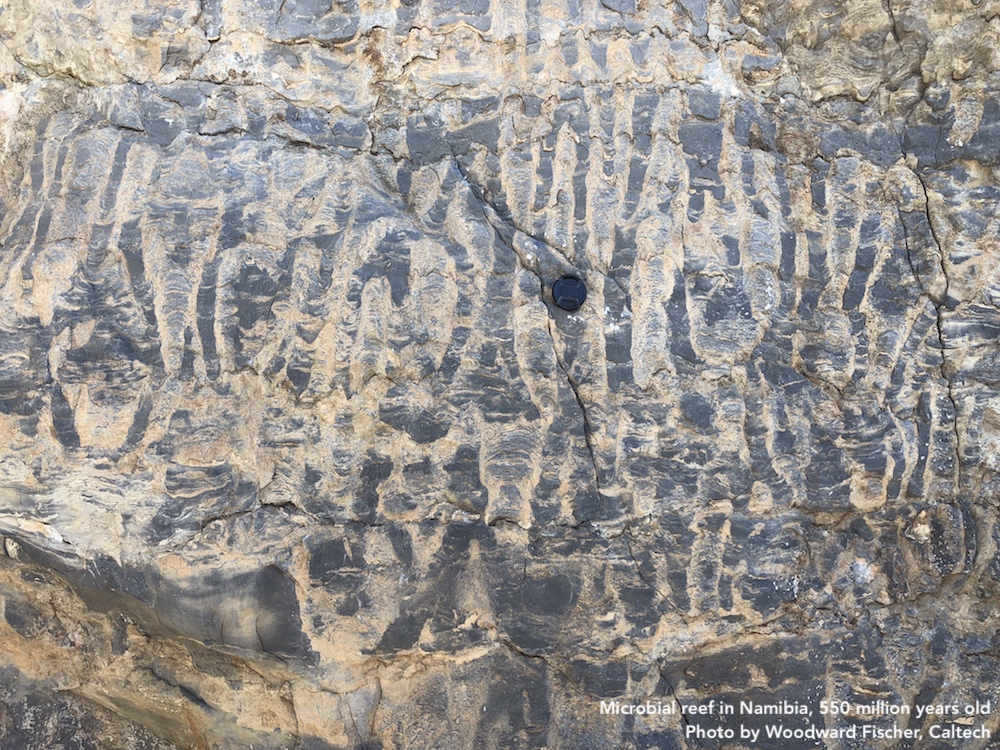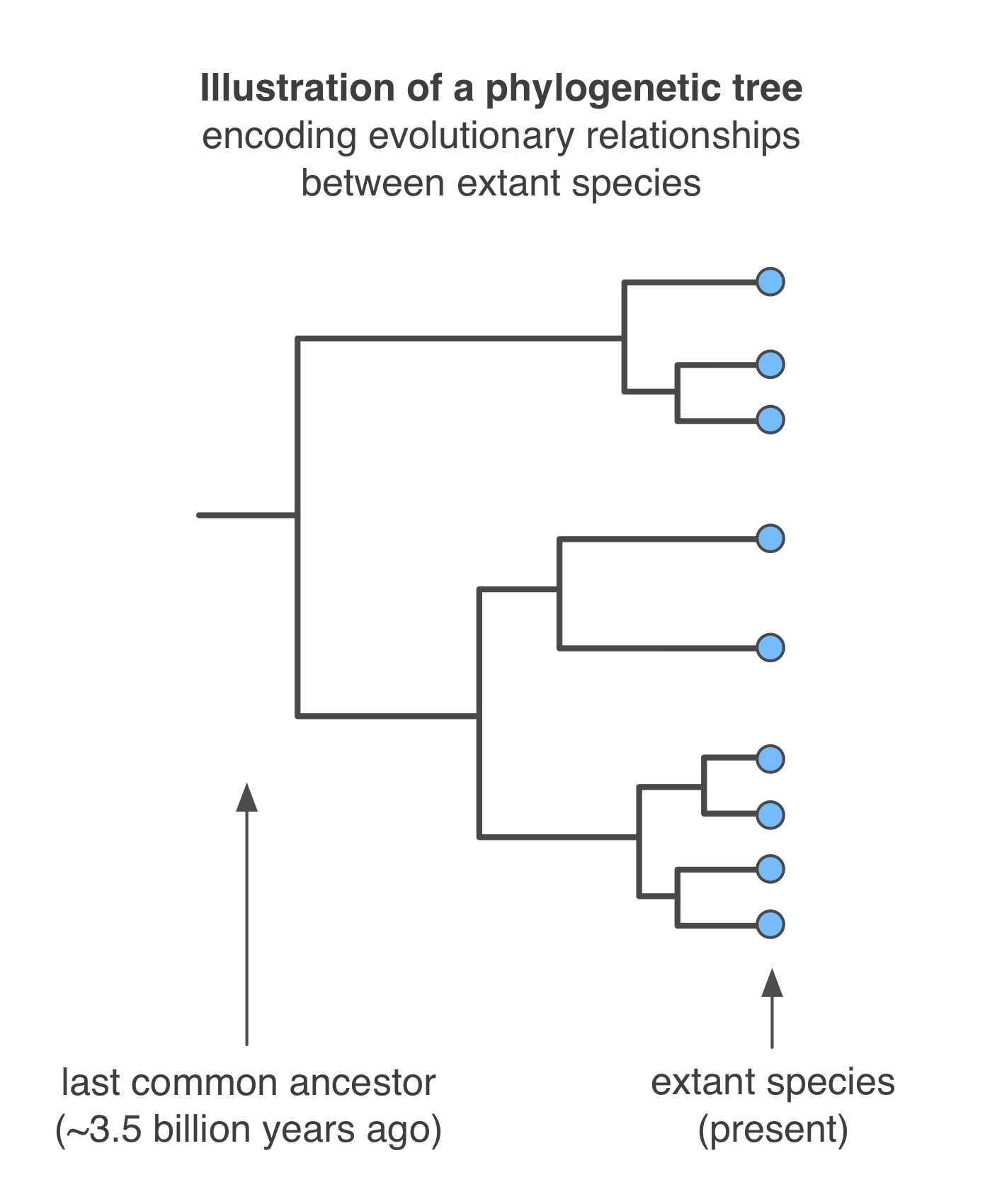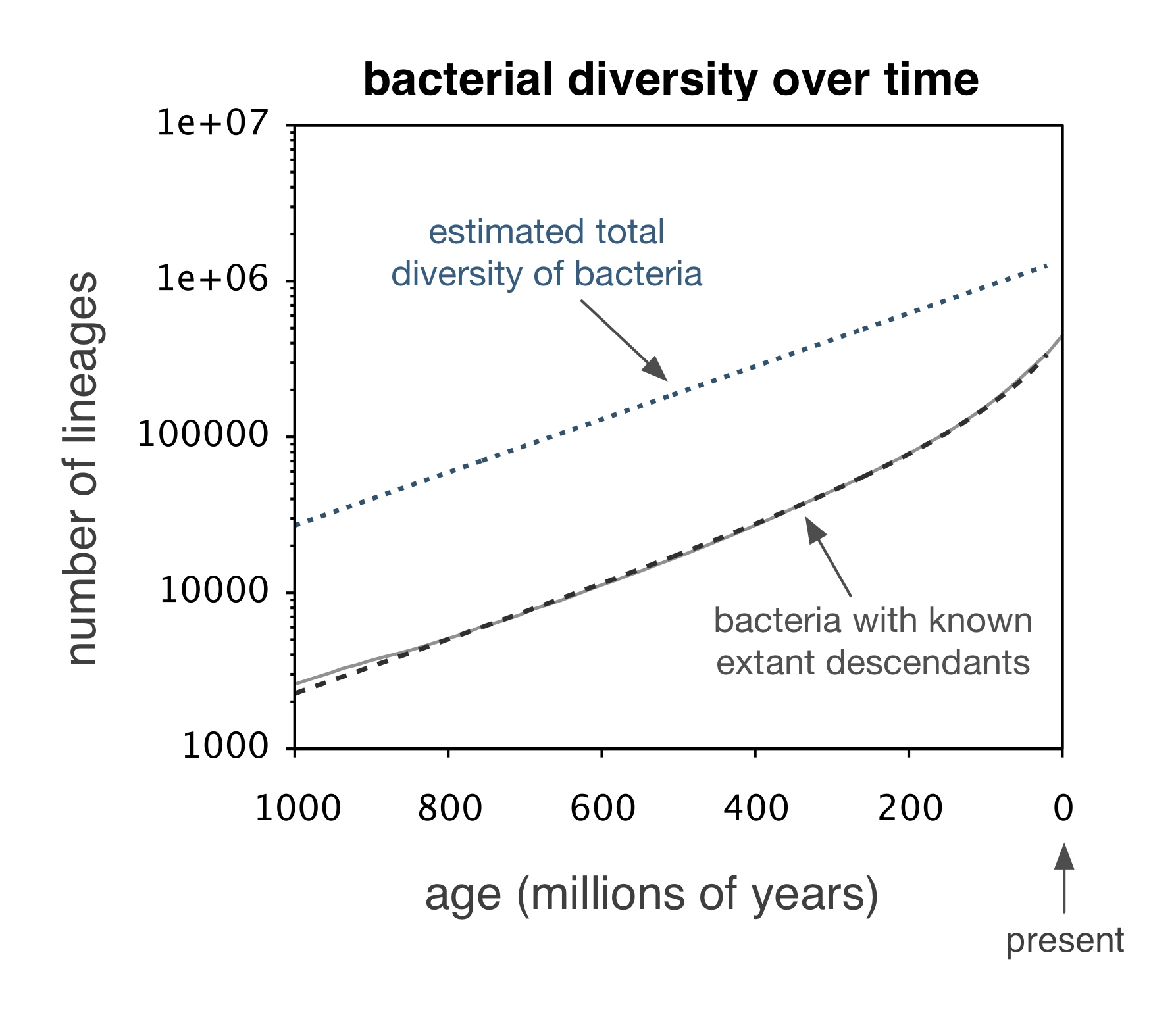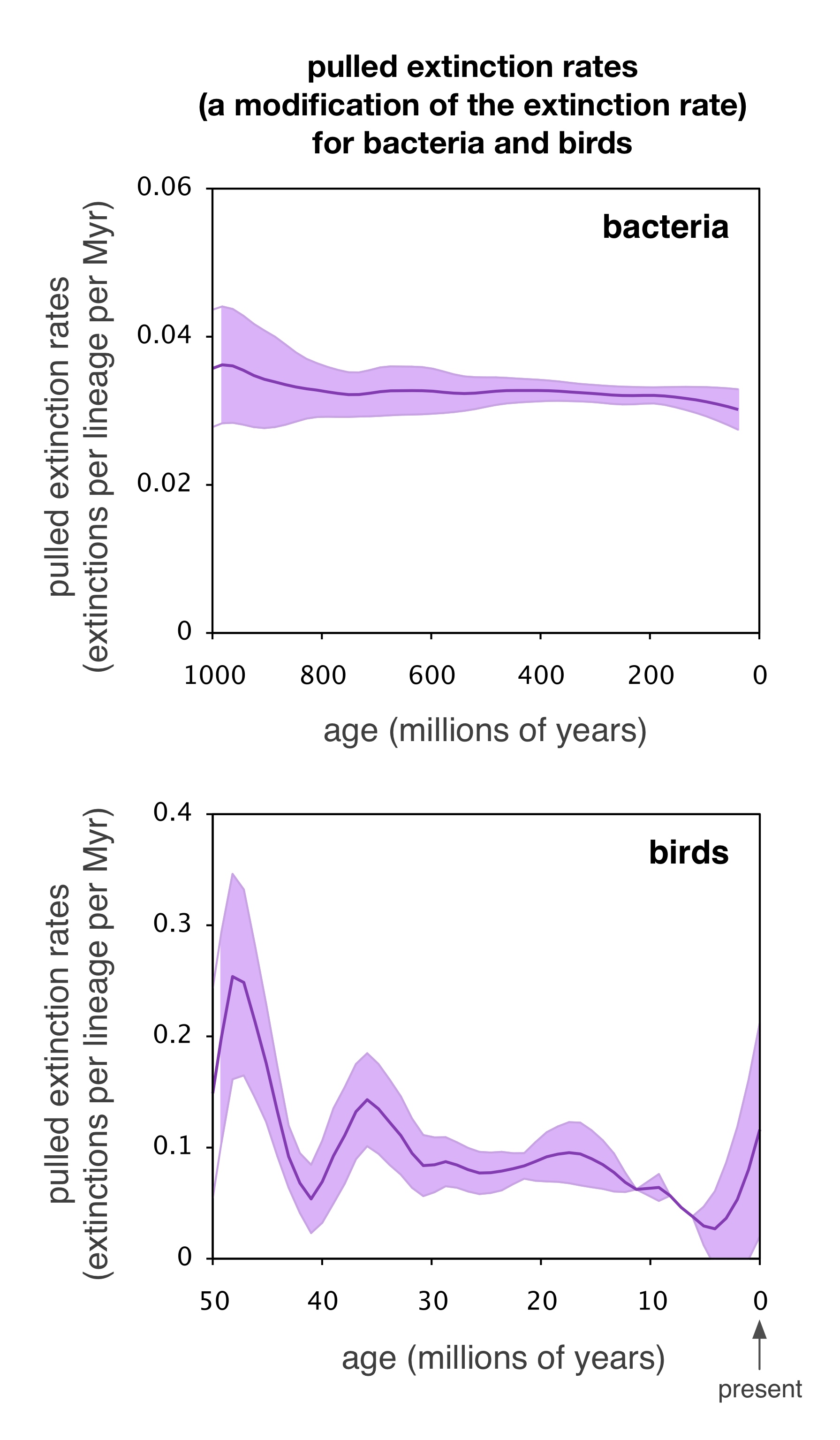|
|
| Bacterial diversification and extinction through deep time |
| By Stilianos Louca. July 30, 2018 |
Introduction
Bacteria are the most ancient and most widespread form of life on Earth.
They have been around for at least 3.5 billion years (in comparison, mammals only appeared about 200 million years ago), and have since been continuously altering Earth's atmospheric and ocean chemistry.
For example, it was Cyanobacteria (a specific type of bacteria) that invented oxygen-generating photosynthesis, which ultimately caused the rise of oxygen in our atmosphere, thus making Earth habitable for most of us.
Undoubtedly, the evolution of bacteria is tighly linked to the evolution of our very planet.
The bacterial fossil record is scarce and hard to read
Despite the central role that bacteria played throughout Earth's history, we know almost nothing about their past evolutionary dynamics.
For example, we don't even know if bacteria go extinct in a similar way that plants and animals go extinct.
Today, very few fossils remain of ancient bacteria, usually in the form of mineralized microbial mats known as "stromatolites" (see figure on the right).
While stromatolites are evidence that microbial life existed millions to billions of years ago, it is extemely hard to infer anything about the specific bacterial species that generated them.
Evolutionary relationships of extant bacteria yield clues about their past
Because the bacterial fossil record is so scarce and hard to read, the only other source of information available are living (extant) bacteria, whose evolutionary relationships (relatedness) contain clues about past bacterial evolutionary dynamics.
Scientists usually organize evolutionary relationships between extant species in the form of "phylogenetic trees", whose leafs represent extant species and whose branches represent the relatedness between species and their ancestors (shorter branches correspond to a closer relatedness).
By statistically comparing these branch lengths near the present and at past times, we can gain insight into the rates at which new bacterial species formed (speciation rates) and the average rates at which bacterial species went extinct (extinction rates).
The idea is simple (albeit full of technical pitfalls): On the one hand, a high density of branching points in the phylogenetic tree indicates a high speciation rate.
On the other hand, longer branches in the past (i.e., towards the tree's "root") compared to the present indicate that many past branches went extinct.
In reality, these two aspects of evolution - speciation and extinction - leave overlapping footprints in phylogenetic trees that can only be partly teased apart.
Reconstructing bacterial diversity through the last 1 billion years
In our latest study published in the journal Nature Ecology & Evolution, we investigated the speciation and extinction dynamics of bacteria over the past 1 billion years, by analyzing the evolutionary relationships between hundreds of thousands of bacterial species from all around the world.
In order to make sense of such massive amounts of data, and in order to account for the fact that speciations and extinctions cannot be fully separated with the information available, we had to develop new mathematical concepts.
One of these new concepts is what we call the "pulled extinction rate", which can tell us if either the speciation and/or extinction rates fluctuated over time (for example during mass extinction events), but not necessarily what the exact speciation and extinction rates were.
To our surprise, we found that overall bacterial diversity, i.e. the number of bacterial species at any given time, has been steadily increasing over the past 1 billion years, at a roughly exponential rate.
This strongly contrasts what we know about animal diversity, which experienced intense and abrubt mass extinctions during that same period, such as the extinction of the dinosaurs and many other animals about 66 million years ago.
For example, when we applied our analysis to birds instead of bacteria, we could clearly see the strong variations in their speciation/extinction dynamics over time.
So whatever caused the mass animal extinctions in the past, seemed to have little effect on overall bacterial diversity.
One reason may be that bacteria can evolve and adapt much faster than animals, making them more resilient to environmental changes.
Most bacterial species that ever existed, are now extinct
The above finding does not necessarily mean that bacteria don't go extinct at all, as is commonly speculated - it only indicates that their extinction rates remained rather constant over time.
In fact, we estimated that the majority of bacterial species that ever existed on Earth, are now extinct.
As the majority of them did not form fossils that could persist until the present, we will probably never know the identity and nature of millions of past bacterial species.
May they forever rest in peace.
Full scientific article:
Louca, S., Shih, P. M., Pennell, M. W., Fischer, W. W., Parfrey, L. W., Doebeli, M. (2018). Bacterial diversification through geological time. Nature Ecology & Evolution 2:1458-1467
Follow up: Radio interview at Science Friday
|
|
 ×
 ×
 ×
 ×
|
|
|
Louca lab. Department of Biology, University of Oregon, Eugene, USA
© 2025 Stilianos Louca all rights reserved
|
|
|



